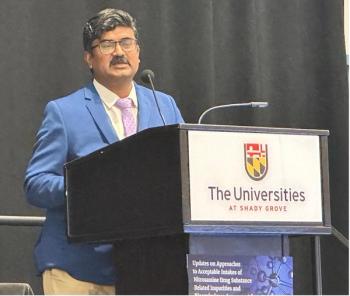
Imprinted Structures to Separate Acteoside from Desert Ginseng
Shihezi University scientists recently developed a new imprinted structure to separate acteoside (ACT) from other substances within Cistance tubulosa, or “desert ginseng.”
A recent study done by scientists from Shihezi University in Shihezi, China developed a new imprinted structure to separate acteoside (ACT) from other substances within Cistance tubulosa, or “desert ginseng.” Their findings were published in the Journal of Chromatography A (1).
Cistance tubulosa, more commonly referred to as “desert ginseng,” is a parasitic plant that contain ACT and echinacoside (ECH) of phenylethanoid glycosides (PhGs) as its main active ingredients. The ACT allows the plant to have capacity for improving memory and immunity, anti-aging, among other benefits (2). Separating ACT from PhGs can help develop more effective treatments. However, PhG components are complex, and there are ECH that share functional groups (albeit in different positions) and similar sizes as ACT. As such, a suitable selective separation method for ACT must be chosen.
Pharmacological Traditional Chinese Medicine (TCM) investigations involve researching the interactions between TCMs and multiple target sites of the human body. Highly selective sample preparation techniques are needed to improve limits of detection (LODs) and reproducibility, to decrease analysis time and reduce the number of preparation steps. Further, more new selective sorbents need to be developed so that one can simultaneously extract only the target compound and its analogues (3).
Molecularly imprinted membranes (MIMs), which are a combination of MST and molecular imprinting technology (MIT), can be used for highly selective separation. One branch of MIMs, molecularly imprinted nanocomposite membranes (MINMs), had advantages like precise recognition, precise recognition, and high stability. However, these often demonstrate low permselectivity, which is the preferential permeation of certain ionic species through ion-exchange membranes (4).
In this study, ACT-based MINMs (A-MINMs) with coral reef-like imprinted structures were proposed and developed for specifically separating ACT molecules. Nanospheres with hydrophilic multicores (NHMs) were introduced into polyvinylidene fluoride (PVDF) powders to obtain NHMs@PVDF membranes by a phase inversion method. Phase inversion is a process of controlled polymer transformation from a liquid phase to a solid phase. Four techniques are used to develop phase inversion membranes: precipitation from vapor phase, precipitation by controlled evaporation, thermally induced phase separation, and immersion precipitation (5). After this, the designed imprinted structure, which held likeness to a coral reef, was constructed on a NHMs@PVDF membrane-based surface.
The A-MINMs with coral reef-like imprinted structures had dendritic and porous properties, which allowed for an abundance of ACT-imprinted cavities and sites of A-MINMs. Further, hydrophilic multicores and the void space of NHMs combined to for affinity capture cages for hydrophilic ACT, enhancing rebinding the A-MINMs’ capacity and permselectivity.
Altogether, A-MINMs with coral reef-like imprinted structures exhibited high rebinding capacity (110.95 mg/g), rebinding selectivity of 5.15, and an outstanding permselectivity of 10.05toward ACT molecules. The preparation strategy of MINMs with coral reef-like imprinted structure was anticipated to promote MIM development. This provides a new feasible method for permselectivity separation of other bioactive components.
References
(1) Fang, M.; Chen, C.; Fan, Y.; et al. Constructing Coral Reef-Like Imprinted Structure on Molecularly Imprinted Nanocomposite Membranes Based on Nanospheres with Hydrophilic Multicores for Selective Separation of Acteoside. J. Chromatogr. A 2025, 742, 465645. DOI:
(2) Kong, Z-L.; Johnson, A.; Ko, F-C.; He, J-L.; Cheng, S-C. Effect of Cistanche Tubulosa Extracts on Male Reproductive Function in Streptozotocin–Nicotinamide-Induced Diabetic Rats. Nutrients 2018, 10 (10), 1562. DOI:
(3) Tang, F.; Zhang, Q.; Nie, Z.; Yao, S.; Chen, B. Sample Preparation for Analyzing Traditional Chinese Medicines. TrAC Trends Anal. Chem. 2009, 28 (11), 1253–1262. DOI:
(4) Perm-Selectivity. ScienceDirect 2011.
(5) Definition of Phase Inversion Membrane. Synder Filtration 2025.
Newsletter
Join the global community of analytical scientists who trust LCGC for insights on the latest techniques, trends, and expert solutions in chromatography.





